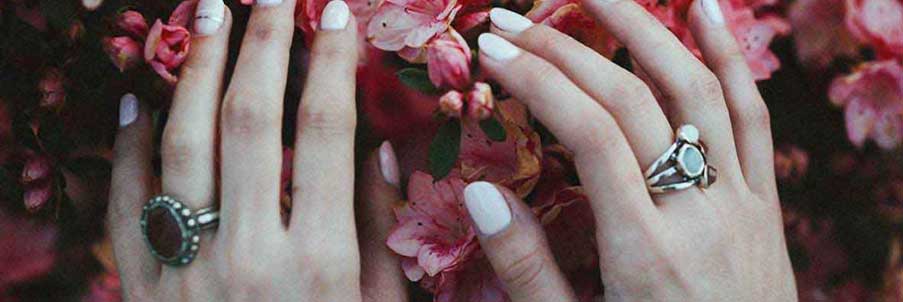The skin tolerance of jewelry varies from person to person. Do you have to scratch your finger all the time, have a red rash on your wrist, and can hardly get your earrings out of your ear hole because it is swollen? Then you probably belong to the group of allergy sufferers who react to metals. But how can you find out which metal you are allergic to and how can you prevent the allergy?
There are many allergies. Pollen, dust, or tomato allergies, our body now defends itself against the craziest things. Unfortunately, we also often react against metals that are contained in jewelry. Sadly, we don’t know exactly how these allergies come about; one speculation is that we pay more attention to hygiene so that our bodies are no longer used to such influences. But why some people react to gold, silver, or nickel is not known. But we can explain to you how the allergy comes about and what symptoms occur.
Symptoms and causes of skin sensitivities
- Blackening of the skin, caused by the chipping of metals of the jewelry. These discolor due to environmental influences such as sweat and salts.
- Inflammatory irritation of the skin due to penetration of metal ions through the skin, for example through wounds.
- Inflammation of the skin due to excessive defense of the immune system against metals. This is recognizable by itchy redness, swelling of the skin, throwing of blisters, bloody chapping, and minor scaling. This inflammation is the only allergic reaction.
How does a jewelry intolerance become noticeable?
Black discoloration of the skin: This symptom occurs more often, but you don’t have to worry about it. In this case, the piece of jewelry only splinters off individual particles, which are then discolored by salts or sweat. Therefore, the black discoloration of the skin is really not a bad thing. Precious metals, such as gold or silver, can be the cause of the blackening, for example by being separated from the piece of jewelry by sweat or rough skin.
Irritation of the skin: In this case, metal ions settle through the cornea into deeper layers of the skin. This can happen, for example, through a wound near the worn piece of jewelry. The metal ions accumulate under the skin, causing the skin to become inflamed in an attempt to get rid of the foreign body.
Allergic inflammation of the skin: This symptom is the only one that can be attributed to a true intolerance, as the other symptoms, such as black discoloration of the skin or irritation of the skin, can occur in anyone. Due to the immune system’s defense against metals, the skin becomes inflamed. The skin starts to itch, swells or blisters. However, this only occurs in a few people who have an allergy to certain metals. How bad the irritation depends on the severity of the allergy and how much of the metal is in the jewelry. If you have had such an allergic reaction, it is best to go to a dermatologist and have an allergy test done!
Many pieces of jewelry are not always made of just one metal, but consist of several different types. For example, a white gold ring is either 75% or only 33% real gold.
How is the skin affected by jewelry alloys?
For the reason that most jewelry is not made of one metal, but of many different components. For example, a ring made of white gold is made of 33% or 75% real gold, with the rest made of nickel or other alloys. Pure gold would be much too soft for jewelry making, which would make it suffer in durability. Jewelry made of silver is also usually not made of pure silver. For example, the popular sterling silver also has a proportion of other metals, albeit a very small one. However, silver, gold, and platinum are considered biocompatible, which means that they can be well tolerated by the body. The same goes for titanium, which is also rarely reacted to. So if we react to silver jewelry, it is usually not silver at all, but the element with which silver was alloyed to make the jewelry. The additive in the jewelry is therefore the trigger for intolerances. Of course, this makes it relatively difficult to identify the reason for the skin irritation. So if you have an allergic reaction to a piece of jewelry, we advise you to go to a dermatologist to have an allergy test. Then you will know exactly which substance your body is rejecting.
Caution: Jewelry made of precious metals is not automatically only made of gold or silver. Because the metals would otherwise be too soft, they are mixed with other metals. Therefore, pay attention to the description of the product to prevent possible allergic reactions.

